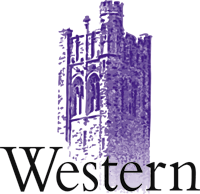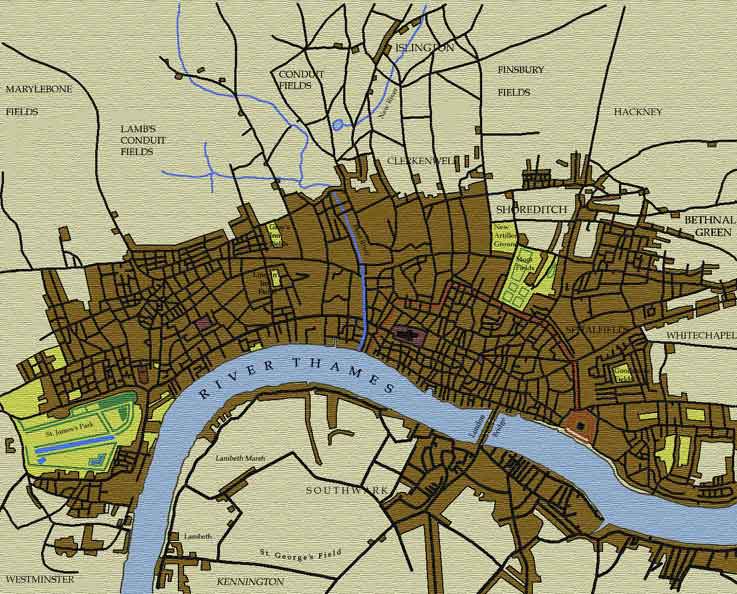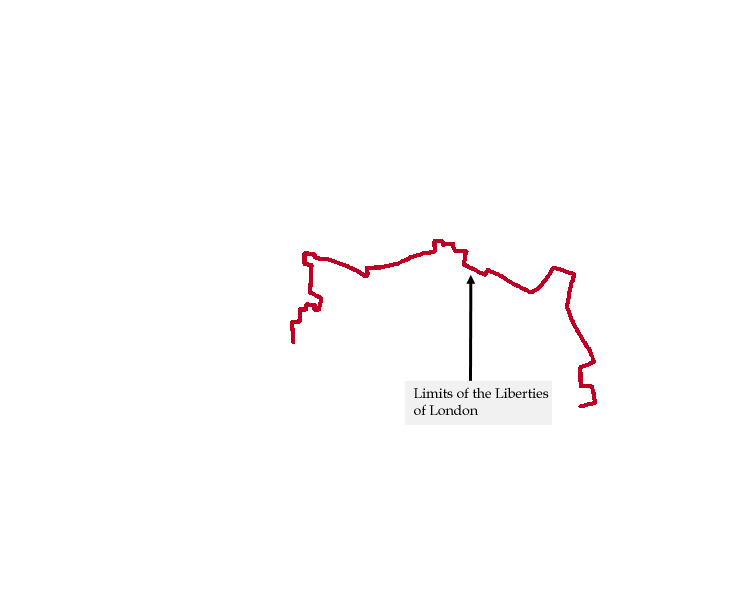


London ca. 1676
The London Liberties
|
Although the city walls
provided a more "concrete" symbol of the bounds of the City,
the reach of the Guildhall — and the Lord Mayor and Aldermen of London
— extended beyond the walls, to the limits of the city "Liberties"
that represented the political and legal limits of the power of city goverment.
The bounds of the "Liberties" were, roughly, the Tower of London
to the east, and the Temple Bar, on Fleet Street, to the west. Beyond
these Liberties was Westminster, and the suburbs that would, in fact,
soon be swallowed up by the prodigious growth of the city during the next
century. |
|
|
 |
Website maintained by: Mark
McDayter
Website administrator: Mark McDayter
Last updated: April 25, 2002